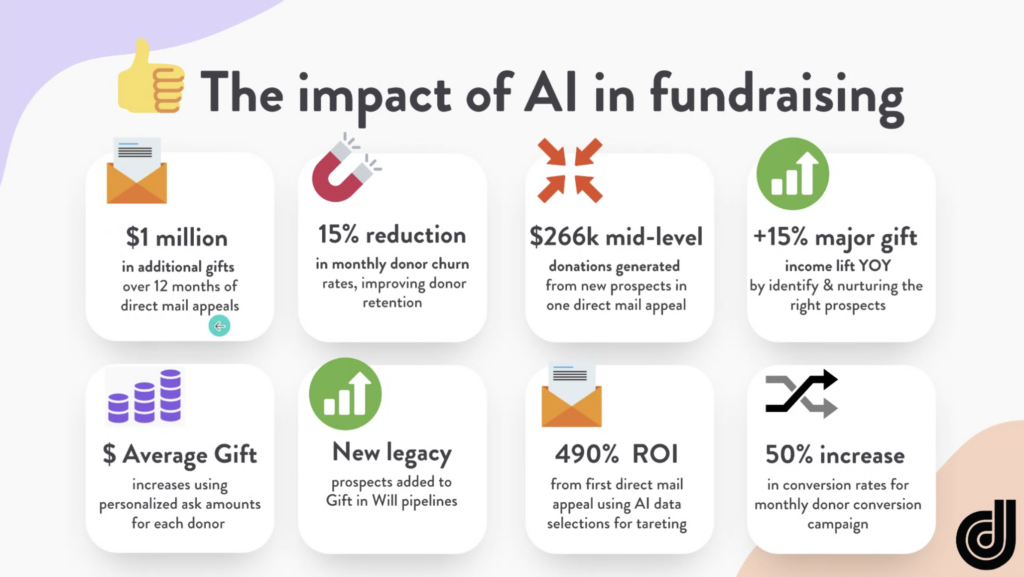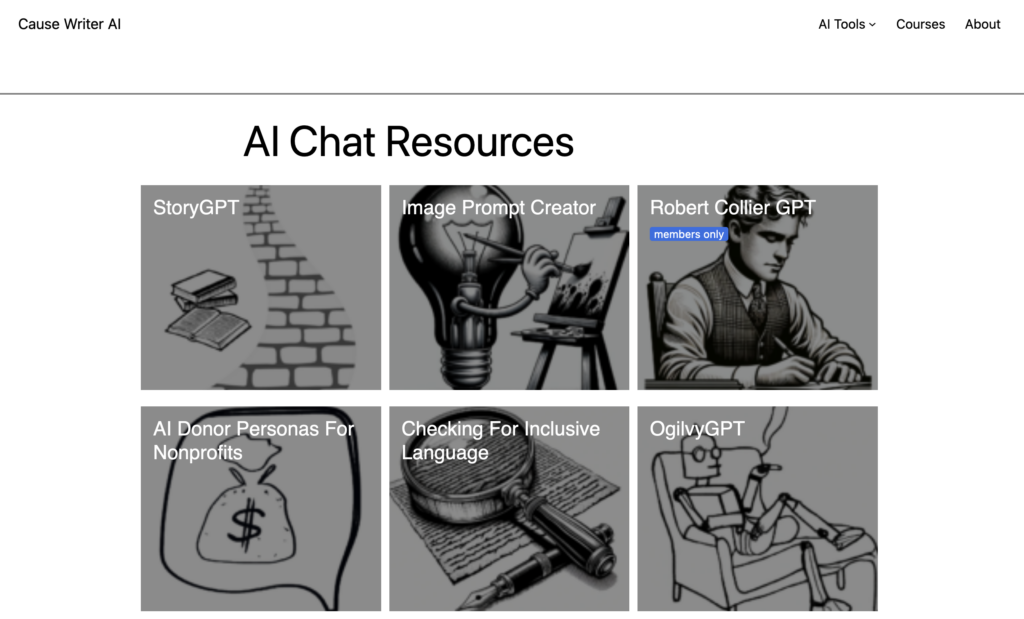
Updated 01/8/24
AI is starting to become integrated into many areas, including the nonprofit sector, but what is it exactly? AI, or artificial intelligence, is “a machine’s ability to perform the cognitive functions we associate with human minds, such as perceiving, reasoning, learning, interacting with an environment, problem-solving, and even exercising creativity.” (McKinsey & Company)
According to Dataro, an AI fundraising software company, nonprofits are using AI to predict their donor prospects, gift amounts, optimum print and digital channels, and campaign sizes.
For example, St. Jude Children’s Research Hospital used AI tools and was successful in reaching new donor audiences. By analyzing the data of past donors, they determined one of the most effective communication missions was through the stories of their patients. Armed with that knowledge, they were able to use AI to increase new donors by 25 percent.
In addition to using AI to create social media copy and email subject lines, nonprofits are using it for content exploration, generation, and editing, such as creating campaign drafts or translating them into multiple languages.
Dataro goes on to show that nonprofits are seeing the impact of incorporating AI into their fundraising, with an increase in additional gifts, among other positive effects.

Image from Dataro
Ready to see how AI can enhance your fundraising efforts? Here are some resources you may find useful for implementing AI at your nonprofit.

Image from WholeWhale
As with any new technology, AI has its limitations and risks, so it’s wise to learn as much as you can before diving in. The use of AI for plagiarism has been widely discussed—and there are now tools to spot it—however, there are other concerns to be aware of.
The accuracy of output or sources of the data supplied by AI writing tools such as ChatGPT may not be apparent, so it’s always a good idea to confirm with reliable sources. Or choose a tool such as Perplexity, which includes citations in its results.
Another potential is that AI tools using wide-ranging web content can provide results that “amplify biases and harms,” as Stanford Social Innovation Review points out. Taking a human-centered approach and carefully reviewing results before using AI-generated content is recommended.
An article by The Chronicle of Philanthropy, suggests, “Leaders should make sure to ‘do no harm’ with AI by taking steps like asking questions of your software providers about what their tools are really doing, including what is in their AI algorithms and how they factor in bias.”
It’s important to know how images are being sourced when using image generators, as the results may be violating artists’ copyrights. For example, Adobe Firefly was trained on Adobe Stock images as well as public domain content that is not under copyright, making it a safer choice.
Above all, always make sure any AI-generated imagery stays on-brand and is aligned with your organization’s mission.
AI has arrived in nonprofits—and it may be here to stay. Now is the time to educate yourself, do your homework, and create strategies for your team to use it effectively (and wisely) in your marketing and fundraising.
And if you’re working at an association, here is a blog about AI especially for you.
Want more branding and marketing tips and resources for your nonprofit, association, or other mission-focused organization? Join my monthly email list—plus get my free Nonprofit Branding Checklist.